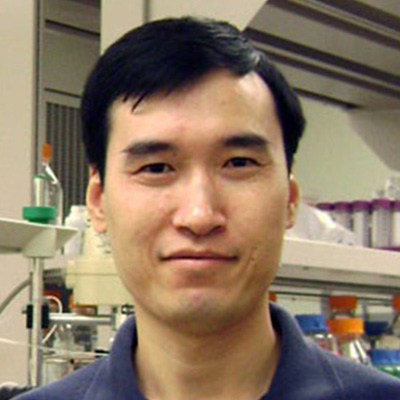Biography
Karen Hoppens Gylys is a neuroscientist who joined the faculty of the School of Nursing and the Brain Research Institute in 1998. Dr. Gylys earned a B.S. degree in Nursing and a M.S. degree in Human Development at the University of Texas, Dallas. She received her Ph.D. in Neuroscience, with a major in neuropharmacology, at UCLA in 1993, and did postdoctoral work on molecular mechanisms of opioid tolereance in the NPI. Since joining the faculty of the School of Nursing, she has taught pharmacology and research in the School of Nursing and is actively involved in the BRI. Her laboratory research is focused on understanding the dysfunction and loss of synapses that occurs in Alzheimer’s disease (AD), and she has pioneered the use of flow cytometry for the analysis of synaptosomes. Her projects use primarily human postmortem AD samples and mouse models of the disease. Research interests include neuroinflammation and APOE risk for AD, the single biggest genetic risk, which can also be also protective. Recent projects have isolated brain cell types from human postmortem samples in order to study microglial and astrocyte effects on AD progression. We also have new projects looking at exosome mechanisms in pathology and signaling between cortical cell types.
Publications
A selected list of publications:
Bilousova Tina, Melnik Mikhail, Miyoshi Emily, Gonzalez Bianca L, Poon Wayne W, Vinters Harry V, Miller Carol A, Corrada Maria M, Kawas Claudia, Hatami Asa, Albay Ricardo, Glabe Charles, Gylys Karen H
Apolipoprotein E/Amyloid-β Complex Accumulates in Alzheimer Disease Cortical Synapses via Apolipoprotein E Receptors and Is Enhanced by APOE4 The American journal of pathology, 2019; 189(8): 1621-1636.
Bilousova Tina, Elias Chris, Miyoshi Emily, Alam Mohammad Parvez, Zhu Chunni, Campagna Jesus, Vadivel Kanagasabai, Jagodzinska Barbara, Gylys Karen Hoppens, John Varghese
Suppression of tau propagation using an inhibitor that targets the DK-switch of nSMase2 Biochemical and biophysical research communications, 2018; 499(4): 751-757.
Abud Edsel M, Ramirez Ricardo N, Martinez Eric S, Healy Luke M, Nguyen Cecilia H H, Newman Sean A, Yeromin Andriy V, Scarfone Vanessa M, Marsh Samuel E, Fimbres Cristhian, Caraway Chad A, Fote Gianna M, Madany Abdullah M, Agrawal Anshu, Kayed Rakez, Gylys Karen H, Cahalan Michael D, Cummings Brian J, Antel Jack P, Mortazavi Ali, Carson Monica J, Poon Wayne W, Blurton-Jones Mathew
iPSC-Derived Human Microglia-like Cells to Study Neurological Diseases Neuron, 2017; 94(2): 278-293.e9.
Zhang Liang, Trushin Sergey, Christensen Trace A, Bachmeier Benjamin V, Gateno Benjamin, Schroeder Andreas, Yao Jia, Itoh Kie, Sesaki Hiromi, Poon Wayne W, Gylys Karen H, Patterson Emily R, Parisi Joseph E, Diaz Brinton Roberta, Salisbury Jeffrey L, Trushina Eugenia
Altered brain energetics induces mitochondrial fission arrest in Alzheimer’s Disease Scientific reports, 2016; 6(4): 18725.
Bilousova Tina, Miller Carol A, Poon Wayne W, Vinters Harry V, Corrada Maria, Kawas Claudia, Hayden Eric Y, Teplow David B, Glabe Charles, Albay Ricardo, Cole Gregory M, Teng Edmond, Gylys Karen H
Synaptic Amyloid-β Oligomers Precede p-Tau and Differentiate High Pathology Control Cases The American journal of pathology, 2016; 186(1): 185-98.
Wang David B, Kinoshita Yoshito, Kinoshita Chizuru, Uo Takuma, Sopher Bryce L, Cudaback Eiron, Keene C Dirk, Bilousova Tina, Gylys Karen, Case Amanda, Jayadev Suman, Wang Hong-Gang, Garden Gwenn A, Morrison Richard S
Loss of endophilin-B1 exacerbates Alzheimer’s disease pathology Brain : a journal of neurology, 2015; 138(Pt 7): 2005-19.
Tai Leon M, Bilousova Tina, Jungbauer Lisa, Roeske Stephen K, Youmans Katherine L, Yu Chunjiang, Poon Wayne W, Cornwell Lindsey B, Miller Carol A, Vinters Harry V, Van Eldik Linda J, Fardo David W, Estus Steve, Bu Guojun, Gylys Karen Hoppens, Ladu Mary Jo
Levels of soluble apolipoprotein E/amyloid-β (Aβ) complex are reduced and oligomeric Aβ increased with APOE4 and Alzheimer disease in a transgenic mouse model and human samples The Journal of biological chemistry, 2013; 288(8): 5914-26.
Arold Stephen, Sullivan Patrick, Bilousova Tina, Teng Edmond, Miller Carol A, Poon Wayne W, Vinters Harry V, Cornwell Lindsey B, Saing Tommy, Cole Gregory M, Gylys Karen Hoppens
Apolipoprotein E level and cholesterol are associated with reduced synaptic amyloid beta in Alzheimer’s disease and apoE TR mouse cortex Acta neuropathologica, 2012; 123(1): 39-52.
Ringman John M, Schulman Howard, Becker Chris, Jones Ted, Bai Yuchen, Immermann Fred, Cole Gregory, Sokolow Sophie, Gylys Karen, Geschwind Daniel H, Cummings Jeffrey L, Wan Hong I
Proteomic changes in cerebrospinal fluid of presymptomatic and affected persons carrying familial Alzheimer disease mutations Archives of neurology, 2012; 69(1): 96-104.





